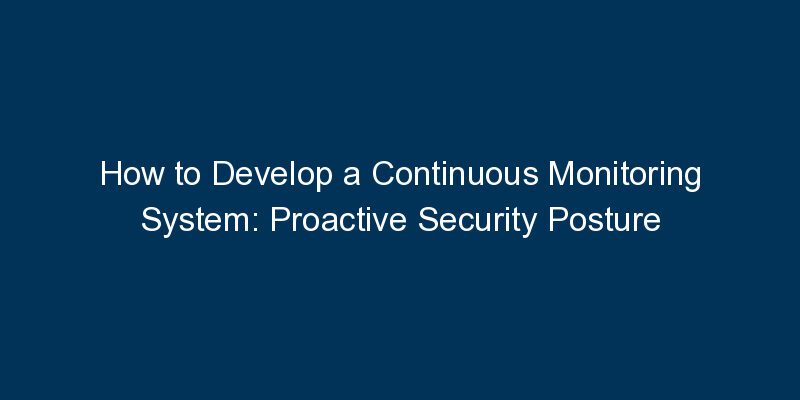Developing a continuous monitoring system is essential for maintaining a proactive security posture, enabling organizations to detect and respond to security threats in real-time. This blog provides a comprehensive guide on how to develop a continuous monitoring system, enhancing the overall security resilience of businesses.
Introduction:
Continuous monitoring involves the ongoing and automated collection of security-related information to detect and respond to potential threats promptly. Establishing a continuous monitoring system is crucial for identifying security incidents in their early stages. This guide explores the key steps in developing a continuous monitoring system.
Key Steps to Develop a Continuous Monitoring System:
- Define Monitoring Objectives: Clearly define the objectives of the continuous monitoring system. Identify the types of threats and vulnerabilities the system will monitor, along with the critical assets and data to be protected.
- Select Monitoring Tools and Technologies: Choose suitable monitoring tools and technologies based on the organization’s requirements. This may include intrusion detection systems (IDS), security information and event management (SIEM) solutions, and endpoint detection and response (EDR) tools.
- Establish Key Performance Indicators (KPIs): Define key performance indicators that align with the monitoring objectives. KPIs help measure the effectiveness of the continuous monitoring system and provide insights into the organization’s security posture.
- Implement Real-Time Alerts: Configure real-time alerts to notify the security team of potential security incidents. Alerts should be based on predefined thresholds and anomalies identified during the continuous monitoring process.
- Integrate Threat Intelligence Feeds: Integrate threat intelligence feeds into the continuous monitoring system. This provides real-time information about emerging threats and allows the organization to adapt its security measures accordingly.
- Automate Response Mechanisms: Implement automated response mechanisms to certain predefined security incidents. Automation helps in reducing response times and mitigating threats before they escalate.
Conclusion:
Developing a continuous monitoring system is essential for maintaining a proactive security posture in the face of evolving cyber threats. By following the steps outlined in this guide, organizations can establish a robust monitoring infrastructure, detect security incidents in real-time, and respond effectively to potential threats.






















Comments